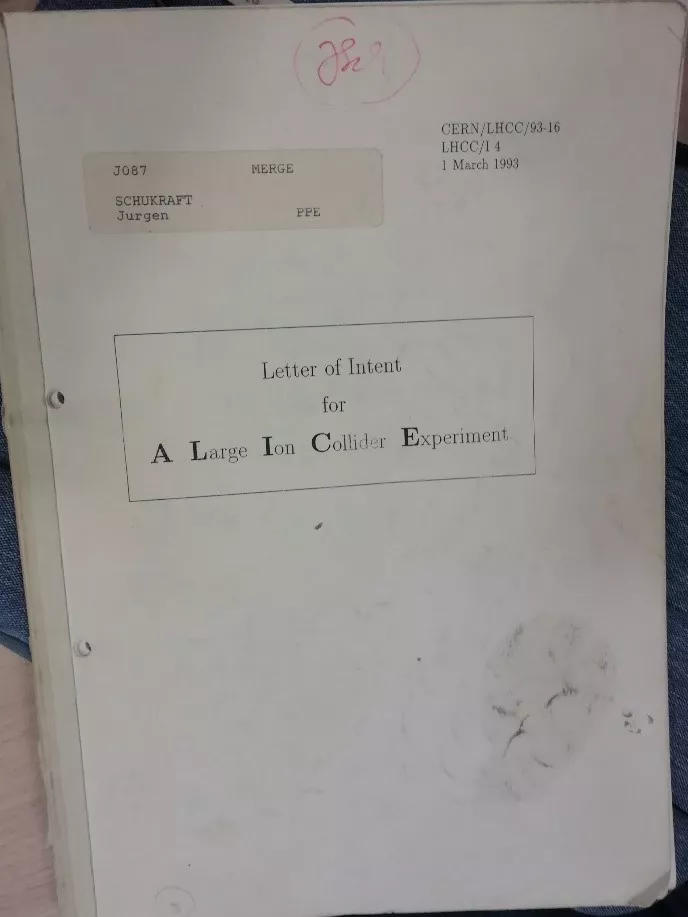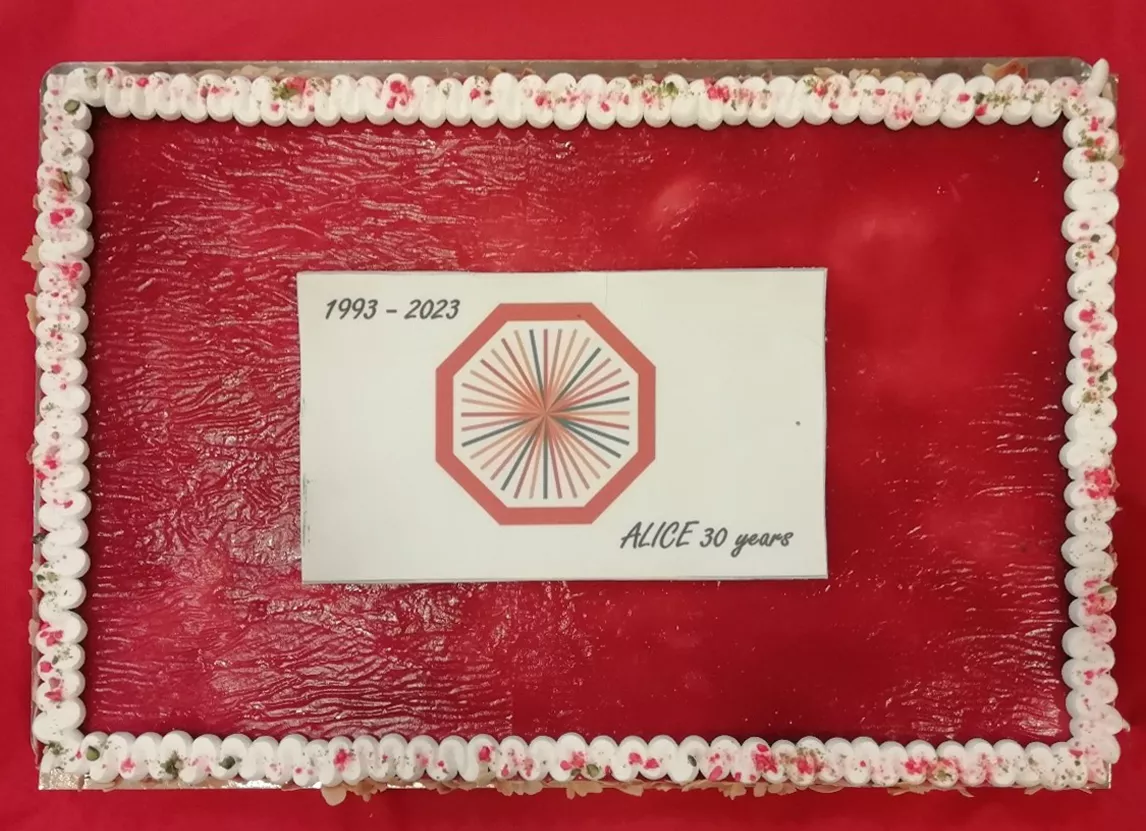The proposal for ALICE (A Large Ion Collider Experiment) was submitted to the management of the European Organization for Nuclear Research (Conseil Européen pour la Recherche Nucléaire, CERN) on March 1, 1993, at 8:00 AM. ALICE, which is celebrating its 30th anniversary this year, is one of the largest facilities of the Large Hadron Collider (LHC) particle accelerator operating at CERN. Its launch is of particular importance to heavy ion physicists, as it provides a basis for studying the universe's primordial matter, the quark-gluon plasma. The ALICE experiment, in the development of which researchers from the ELKH Wigner Research Centre for Physics (Wigner RCP) have been involved for decades, continues to evolve, enriching our knowledge of the properties of strong interactions with increasingly complex measurements.

The original ALICE Letter of Intent
In the early 1990s, during the planning of the Large Hadron Collider (LHC) and its experiments at CERN, the idea of creating a dedicated ultrarelativistic heavy-ion physics experiment emerged, which was also supported by Hungary. The proposal was developed with the participation of György Vesztergombi and József Zimányi, representing the Research Institute for Particle and Nuclear Physics of the MTA Central Research Institute for Physics, the predecessor of the Wigner RCP.
Hungary officially joined the CERN ALICE experiment in 1996. In the first years, the Hungarian ALICE Group contributed to the construction of the Time Projection Chamber (TPC), and also played a leading role in the research and development of the ALICE Data Acquisition System (DAQ) for data collection and transmission. The DAQ provided data for the ALICE experiment until 2020, when it was shut down for the purpose of LHC upgrade. In 2005 Wigner RCP researchers joined the development of a device for measuring high-momentum hadrons. Together with Italian and Mexican researchers, they built the HMPID (High Momentum Particle Identification Detector), which is still operated jointly.
As part of the LHC accelerator upgrade strategy, the HMPID detector was also subject to a long shutdown (LS2) between 2019 and 2022. During this time, the giant experiments at CERN underwent expansions and repairs as well. During the LS2 period, as part of the ALICE experiment, the inner tracking system (ITS) was renewed, a new Gas-Electron Multiplayer (GEM TPC) time projection chamber was developed, and a completely new data acquisition system with a new structure was developed. The Hungarian ALICE Group participated in almost all of these developments, particularly in the GEM TPC and DAQ developments, which took place in the Vesztergombi High Energy Physics Laboratory of the Wigner RCP.
The latest contribution from Hungary to the operation of ALICE is the dedicated analysis system, the ALICE Wigner Analysis Facility, built between 2021 and 2022 and hosted by the Wigner Data Center. This specially designed, high-speed data processing unit operates as part of the Wigner Scientific Computing Laboratory (WSCLAB) and performs data analysis of ALICE from Budapest.
Over the past 30 years, the ALICE experiment has been constantly evolving and enriching our knowledge of the properties of strong interactions with increasingly complex measurements.

Jürgen Schukraft, the father of ALICE, presents the only original copy of the ALICE Letter of Intent

Birthday cake

Group photo of the celebrating members of the ALICE collaboration
ALICE Letter of Intent – 1993: http://cds.cern.ch/record/290825?ln=en
ALICE 30th anniversary: https://alice.cern/ALICEat30
ALICE timeline: https://alice.cern/timeline
The Hungarian language website of the Hungarian ALICE Group: https://alice.wigner.hu
Professional summary of the past 30 years: The ALICE Experiment – A journey through QCD: https://arxiv.org/abs/2211.04384